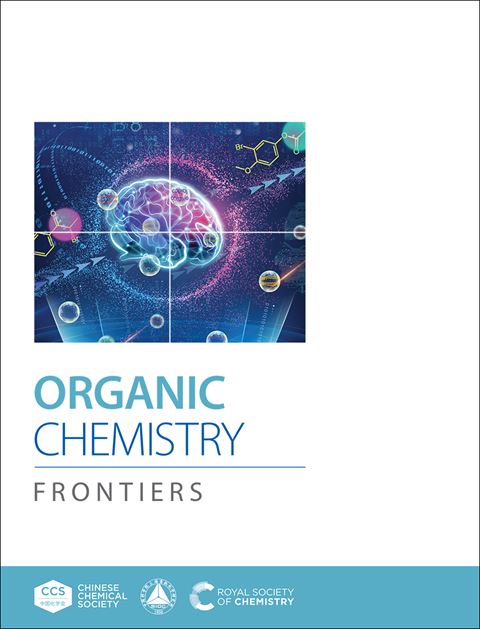金催化TMSN3叠氮化反应及其机理研究
IF 4.7
1区 化学
Q1 CHEMISTRY, ORGANIC
引用次数: 0
摘要
不同领域对芳基叠氮化物的需求不断增长,促使其合成方法取得了重大进展。在这里,我们报道了一个由配体负载的Au(I)/Au(III)氧化还原催化实现的金催化的C-N₃交叉偶联反应。该方法以三甲基硅基叠氮化物(TMSN₃)作为实用的叠氮化物源,有效地将简单芳基碘化物转化为相应的芳基叠氮化物。这种转变的主要特点包括广泛的衬底范围和与后功能化策略的兼容性。结合实验研究、计算分析和两个关键中间体的x射线晶体学得出的机理分析表明,氧化加成和配体交换/叠氮化物转移过程顺利进行,而热或光诱导条件有利于Au(III) -叠氮化物中间体的还原消除。本文章由计算机程序翻译,如有差异,请以英文原文为准。
Gold-catalyzed azidation with TMSN3 and mechanistic studies
The growing demand for aryl azides in diverse fields has spurred significant advances in their synthetic methodologies. Herein, we report a gold-catalyzed C–N₃ cross-coupling reaction enabled by ligand-supported Au(I)/Au(III) redox catalysis. This method employs trimethylsilyl azide (TMSN₃) as a practical azide source to efficiently convert simple aryl iodides into the corresponding aryl azides. Key features of this transformation include broad substrate scope and compatibility with post-functionalization strategies. Mechanistic insights derived from combined experimental studies, computational analyses, and X-ray crystallography of two key intermediates reveal that oxidative addition and ligand exchange/azide transfer proceed smoothly, whereas thermal or photoinduced conditions facilitate the challenging reductive elimination of the Au(III)–azide intermediate.
求助全文
通过发布文献求助,成功后即可免费获取论文全文。
去求助
来源期刊

Organic Chemistry Frontiers
CHEMISTRY, ORGANIC-
CiteScore
7.90
自引率
11.10%
发文量
686
审稿时长
1 months
期刊介绍:
Organic Chemistry Frontiers is an esteemed journal that publishes high-quality research across the field of organic chemistry. It places a significant emphasis on studies that contribute substantially to the field by introducing new or significantly improved protocols and methodologies. The journal covers a wide array of topics which include, but are not limited to, organic synthesis, the development of synthetic methodologies, catalysis, natural products, functional organic materials, supramolecular and macromolecular chemistry, as well as physical and computational organic chemistry.
 求助内容:
求助内容: 应助结果提醒方式:
应助结果提醒方式:


